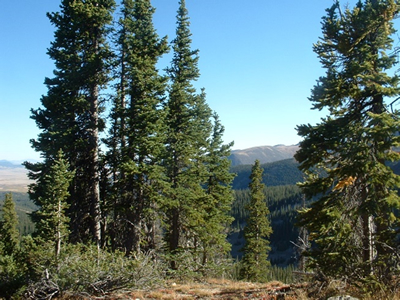Tree & Forest Management
You see, I just can’t get away from it.
This never used to be a problem. People weren’t around. Nature took care of the issue either with lightning generated wildfires, or the natural life cycle of the trees themselves.
The generation of human assets, however, required both protection of these assets and motives to manage the health of trees and whole forests, themselves an asset.
My suggestions here are focused on circumstances found in the high mountain west; not everywhere in the United States. I emphasize the word suggestions. There is no sure thing when it comes to these matters, and on occasion, suggestions offered here may be up-side-down with the reality of a specific in-situ circumstance. Common sense may need to prevail. However, follow these suggestions and most of the time you will come out ahead.

Managing the health of trees, including sensible fire danger awareness on your property, is an important issue. To do so in the most cost-effective way as possible, you may need to spend some time and money. You have to establish priorities.
Actual level ground in the mountains is rare. With regard to fire mitigation, absent wind, wildfires work themselves up hill. The greater the grade, the more this is true. So, start your initial efforts on the downside of whatever you desire to protect. In so doing, if possible, it might also be wise to prejudice your efforts in accordance with prevailing weather conditions. Also recognize that open range land grass can be as great a threat as trees. However, the primary factor should always be the grade.
1. Start by removing all dead slash and dead standing trees, irrespective of species.
2. While at it, remove low hanging branches, under 6 feet, from most live trees. This needs to include extended branch ends that are under 6 feet. The experts don’t agree among themselves on the right numbers. It is a subjective issue, really depending on specific in-situ factors. But you get the idea. The exceptions are, generally, new young growth.
Green Aspens; leave them alone, whatever their size. More on Aspens later.
Confers, generally, leave the young ones under four feet alone. If they are under 8 or 10 feet, then cut branches only under 4 feet or so. The reason for doing this is that firefighters want to keep fires on the ground. Much easier to deal with. Fire getting up into tree canopies set up truly dangerous situations. At this point, (step 2) do not get distracted by the issue of live tree density.
3. The next thing to recognize is that large, tall trees shade and inhibit new young growth. Best to work this issue of tree density after working step 2 above. At this point your perspective will be enhanced. The choking off of young growth is often the case if large and tall trees are packed too tightly together, and, incidentally, fighting among themselves for sun and ground water. Not good.
New young growth should be encouraged regardless of species. This is basic forest management irrespective of the wildfire issue. Don’t get all hung up with your tape measure on distances. Use some common sense. A lot of factors come into play that may or may not have anything to do with wildfire concerns. In-situ, suggestions from a professional could be helpful.
4. Regarding Aspens. Green Aspens are your friend with regard to wildfire management. Aspens are full of water, and young Aspens, particularly those under 5 inches in diameter, present an excellent fire barrier. Don’t let large trees, including large Aspens shade the growth of the young green Aspens. Recognize that, generally, Aspens begin to die at the point when they develop to a diameter of seven to eight inches at the base. Hard to detect, because the process begins at the base, inside the trunk. So, what you really have at this point is a good candidate for firewood. (See my website page about FIREWOOD)
5. So much more I could say and write about forest management. For example, don’t be satisfied with clear cutting 30 feet around your house if you have an 80-foot tree at 35 feet from the kitchen window. And don’t necessarily get upset if a 20-foot tree is 15 feet away. Use your head.